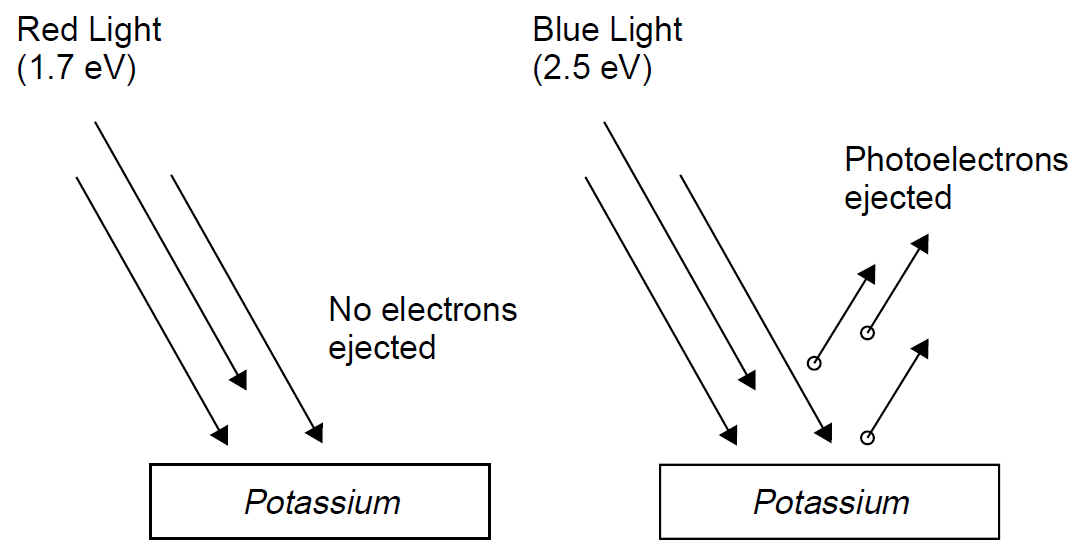
تاريخ الفيزياء

علماء الفيزياء


الفيزياء الكلاسيكية

الميكانيك

الديناميكا الحرارية


الكهربائية والمغناطيسية

الكهربائية

المغناطيسية

الكهرومغناطيسية


علم البصريات

تاريخ علم البصريات

الضوء

مواضيع عامة في علم البصريات

الصوت


الفيزياء الحديثة


النظرية النسبية

النظرية النسبية الخاصة

النظرية النسبية العامة

مواضيع عامة في النظرية النسبية

ميكانيكا الكم

الفيزياء الذرية

الفيزياء الجزيئية


الفيزياء النووية

مواضيع عامة في الفيزياء النووية

النشاط الاشعاعي


فيزياء الحالة الصلبة

الموصلات

أشباه الموصلات

العوازل

مواضيع عامة في الفيزياء الصلبة

فيزياء الجوامد


الليزر

أنواع الليزر

بعض تطبيقات الليزر

مواضيع عامة في الليزر


علم الفلك

تاريخ وعلماء علم الفلك

الثقوب السوداء


المجموعة الشمسية

الشمس

كوكب عطارد

كوكب الزهرة

كوكب الأرض

كوكب المريخ

كوكب المشتري

كوكب زحل

كوكب أورانوس

كوكب نبتون

كوكب بلوتو

القمر

كواكب ومواضيع اخرى

مواضيع عامة في علم الفلك

النجوم

البلازما

الألكترونيات

خواص المادة


الطاقة البديلة

الطاقة الشمسية

مواضيع عامة في الطاقة البديلة

المد والجزر

فيزياء الجسيمات


الفيزياء والعلوم الأخرى

الفيزياء الكيميائية

الفيزياء الرياضية

الفيزياء الحيوية

الفيزياء العامة


مواضيع عامة في الفيزياء

تجارب فيزيائية

مصطلحات وتعاريف فيزيائية

وحدات القياس الفيزيائية

طرائف الفيزياء

مواضيع اخرى
PHOTOELECTRIC EFFECT
المؤلف:
Mark Csele
المصدر:
FUNDAMENTALS OF LIGHT SOURCES AND LASERS
الجزء والصفحة:
p27
8-3-2016
3910
PHOTOELECTRIC EFFECT
The photoelectric effect provides proof of the relationship between energy and frequency as brought to light in the Planck relationship. It also demonstrates the particle nature of light. The effect is observed when photons of light strike a metal surface in a vacuum and electrons are ejected in response to bombardment by these incident photons. This is the principle by which phototubes work: Incident light causes ejection of electrons, which manifests itself as current flow in the tube. As light of a given wavelength (or frequency) strikes the metal, photoelectrons are ejected with various energies; however, it was found that the maximum kinetic energy of the photoelectrons ejected was sharply defined and was dependent solely on wavelength, not on the intensity of the incident beam of light. More important for our purposes of illustrating the photon concept was the discovery that there is a minimum frequency for incident photons below which no photoelectrons are ejected at all; this minimum frequency depends on the metal used. For potassium, a common metal used for photocathodes, incident photons must have energy of at least 2.0 eV to cause photoelectron ejection (and hence current flow). Photons of red light have energies below 2.0 eV and hence will not cause current flow, regardless of intensity, whereas photons of blue light (which have energies of about 3 eV) cause current to flow in the tube, as illustrated in Figure 1.1. Classical wave theory does not allow an explanation of the photoelectric effect. One might argue that incident waves of light perturb the electrons in the metal, causing ejection. It would be expected, then, that the maximum kinetic energy of the photoelectrons ejected would depend on the intensity of the incoming beam, which it does not. Classical wave theory also cannot account for the minimum frequency required for photoelectron emission. On the other hand, Einstein’s photon concept explains this effect as the simple absorption of a photon by an individual electron in an atom of metal. Some electrons simply absorb enough energy to escape the surface of the metal. The threshold energy required to observe this is also

Figure 1.1. Photoelectric effect.
explained by the fact that electrons will be bound to their atoms of metal by some energy that must be overcome to allow escape. If incident photons of light lack this minimum energy, they can still be absorbed by the atoms of metal but will not give the electrons enough energy to escape their bonds and so will not be ejected. Similar evidence1 exists in a host of other experiments, showing the photon concept to be a reasonable explanation of effects observed that cannot be explained through the use of classical wave mechanics. In one such experiment, illustrating the Compton effect, x-ray photons are beamed at a block of paraffin, where they collide with electrons. The resulting collision follows the laws of classical dynamics, with the photon losing energy in the collision, as evidenced by the shift toward a longer wavelength (i.e., it gives energy to the electron during the collision). In this case, the x-ray photons behave exactly like little billiard balls.
 الاكثر قراءة في الضوء
الاكثر قراءة في الضوء
 اخر الاخبار
اخر الاخبار
اخبار العتبة العباسية المقدسة

الآخبار الصحية















 قسم الشؤون الفكرية يصدر كتاباً يوثق تاريخ السدانة في العتبة العباسية المقدسة
قسم الشؤون الفكرية يصدر كتاباً يوثق تاريخ السدانة في العتبة العباسية المقدسة "المهمة".. إصدار قصصي يوثّق القصص الفائزة في مسابقة فتوى الدفاع المقدسة للقصة القصيرة
"المهمة".. إصدار قصصي يوثّق القصص الفائزة في مسابقة فتوى الدفاع المقدسة للقصة القصيرة (نوافذ).. إصدار أدبي يوثق القصص الفائزة في مسابقة الإمام العسكري (عليه السلام)
(نوافذ).. إصدار أدبي يوثق القصص الفائزة في مسابقة الإمام العسكري (عليه السلام)


















